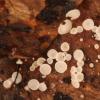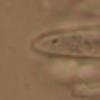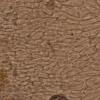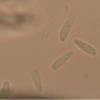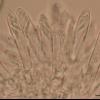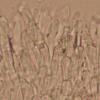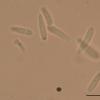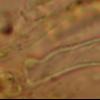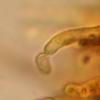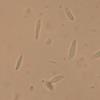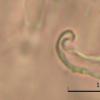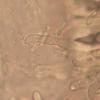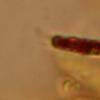
06-12-2025 00:19
 Viktorie Halasu
Viktorie Halasu
Hello, would anyone have this article, please? An

05-12-2025 17:33
 Bruno Coué
Bruno Coué
Bonjour, je serais heureux de recueillir votre avi

02-12-2025 18:59
This pair of ascos 2.5cm across were on recently b

02-12-2025 19:25
Buckwheat PeteHello, can anyone identify this hairy fungus growi

30-11-2025 12:53
 Edvin Johannesen
Edvin Johannesen
White short-stipitate apothecia found on thin twig

30-11-2025 10:47
 William Slosse
William Slosse
I recently found a collection of small Peziza sp.
Hamatocanthoscypha conincola
Zuzana Sochorová (Egertová),
13-07-2024 19:50
 Hello,
Hello,I have identified this fungus as Hamatocanthoscypha conincola, although the ascospores are slightly longer than usually - (5.3)5.4-7.1(8.1) × (1.5)1.6-2 µm, Q = (2.8)3.1-4.5 (4.9), n = 25.
Me = 6.3 × 1.7 µm; Qe = 3.6
Asci 25.8-31.1 × 4.4-5.1 µm, IKI bb, H+.
Would you agree with the identification?
I can see that Svr?ek gives "porus not amyloid" for the neotype collection. However, collections presented here or in other reliable webs have amyloid pore. Why it is? Did anyone revise the neotype?
Zuzana
Ingo Wagner,
13-07-2024 20:25

Re : Hamatocanthoscypha conincola
Hello Zuzana?
What is the date of the find and what is the substrate?
Greetings
Ingo
What is the date of the find and what is the substrate?
Greetings
Ingo
Zuzana Sochorová (Egertová),
13-07-2024 20:31

Re : Hamatocanthoscypha conincola
Hi Ingo,
substrate is a cone of Picea abies and it was collected two days ago (11th July 2024).
Zuzana
substrate is a cone of Picea abies and it was collected two days ago (11th July 2024).
Zuzana
Ingo Wagner,
13-07-2024 20:54

Re : Hamatocanthoscypha conincola
Hello Zuzana!
I would believe your determination.
Quite typical for this species are the blunt, curved hairs mainly on the flank, less directly on the margin.
The spores that are too long are probably not freshly shot.
Greetings
Ingo
Zuzana Sochorová (Egertová),
14-07-2024 08:30

Re : Hamatocanthoscypha conincola
Thank you, Ingo.
Do you understand how is it possible that Svrcek describes inamyloid asci, while today we identity as Psilocistella/Hamatocanthoscypha conincola species with amyloid asci (both on Picea and Pinus cones)?
Zuzana
Do you understand how is it possible that Svrcek describes inamyloid asci, while today we identity as Psilocistella/Hamatocanthoscypha conincola species with amyloid asci (both on Picea and Pinus cones)?
Zuzana
Ingo Wagner,
14-07-2024 13:18

Re : Hamatocanthoscypha conincola
Hello Zuzana!
I can't say, in my opinion it is a mistake.
Greetings
Ingo
I can't say, in my opinion it is a mistake.
Greetings
Ingo
